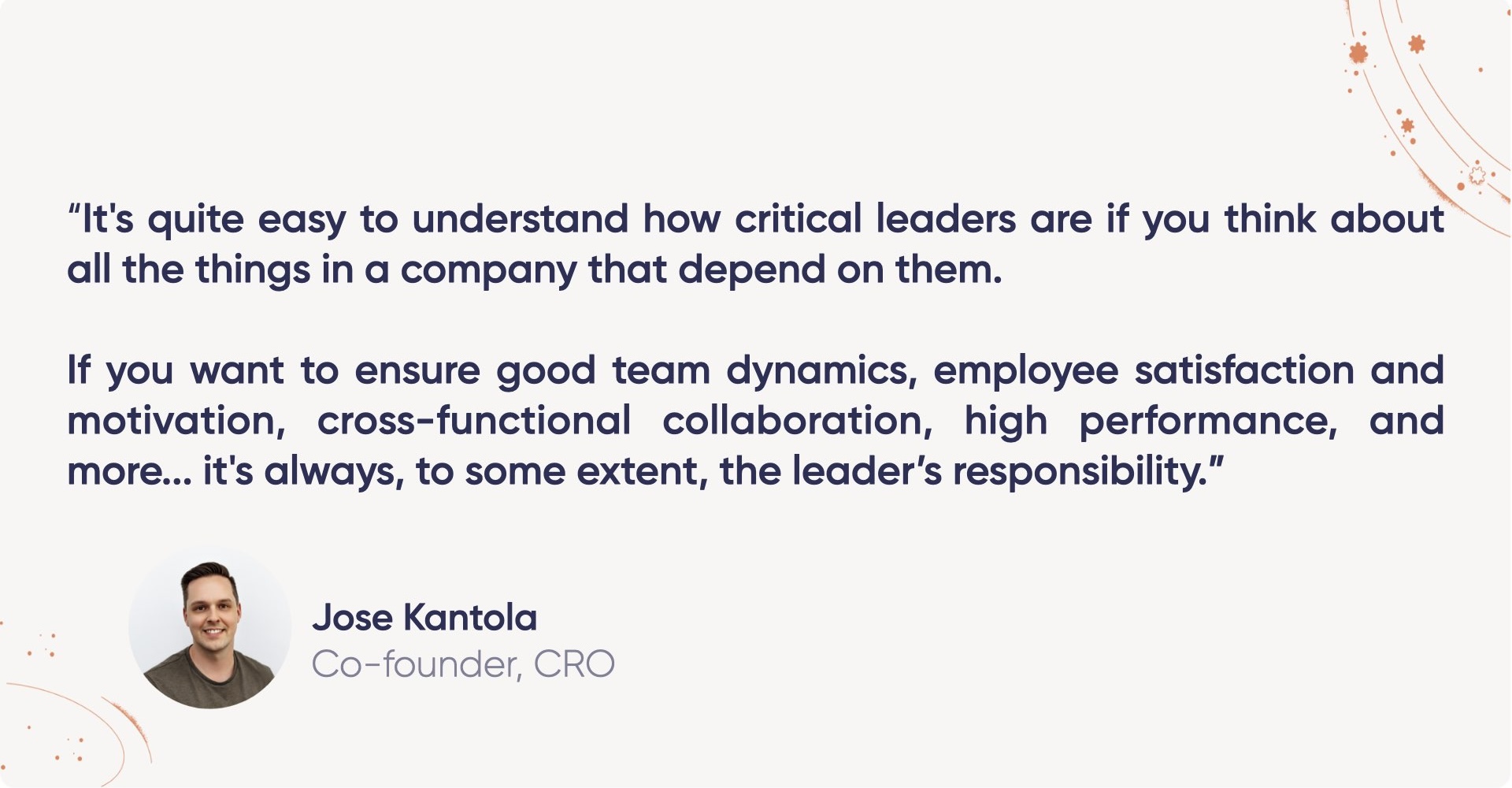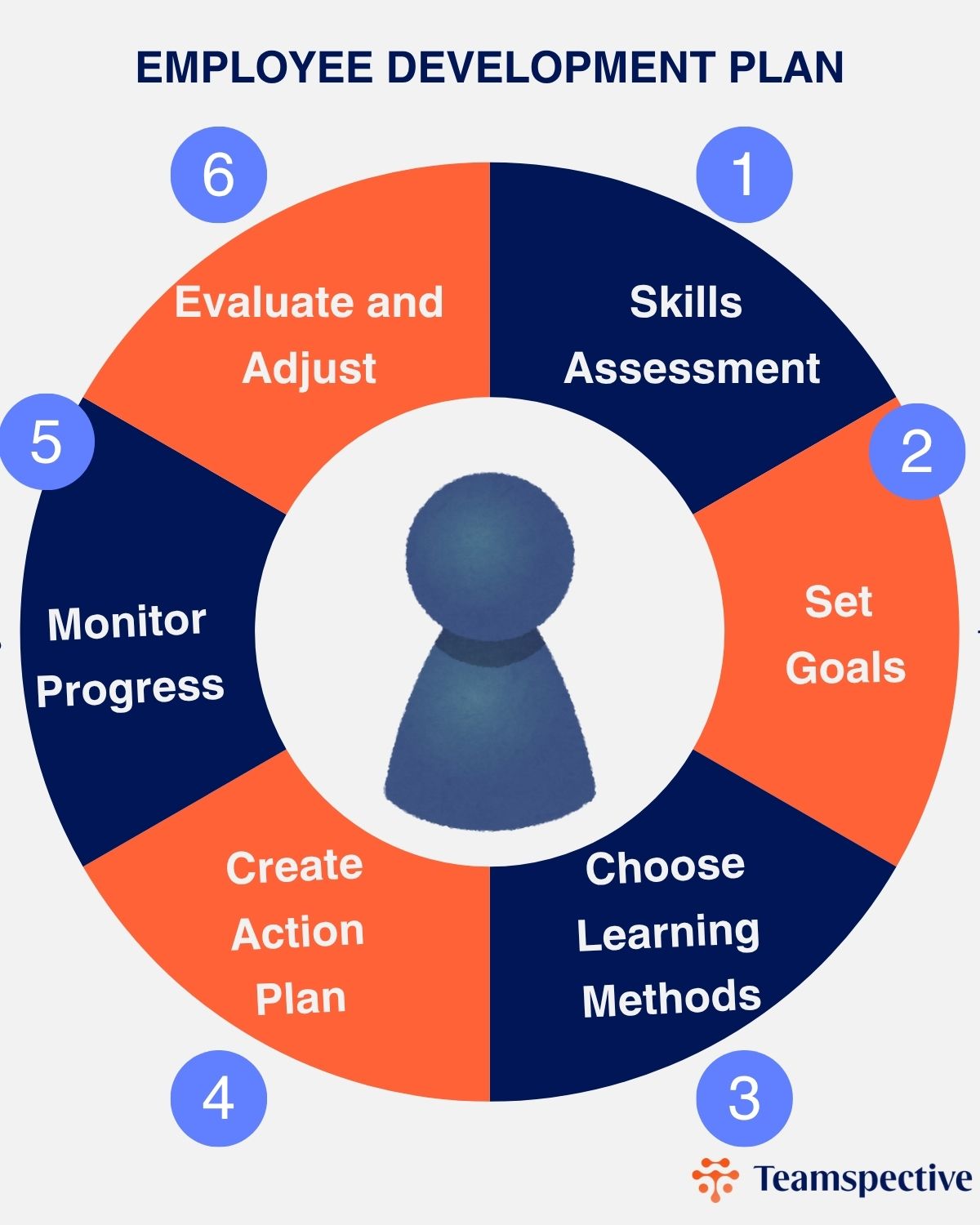How to Create a Successful Employee Development Plan
July 30, 2025Companies with structured development plans have higher retention, especially among their top performers, leading to more profit. But a good plan is more than training. It’s about helping leaders spot growth chances and use the right data to act.
What’s the difference between companies that keep good people and those that don’t? A strong employee development plan.
However, many companies struggle with employee development. Some throw random training at staff without a clear plan. Others skip it completely, then wonder why top employees leave for better jobs.
Companies with structured development plans have higher retention, especially among their top performers, leading to more profit. But a good plan is more than training. It’s about helping leaders spot growth chances and use the right data to act.
What is an Employee Development Plan?
An employee development plan is a clear path that shows how someone can grow their skills and career within the company.
These plans can be simple or complex. But the best ones include:
- Clear learning goals
- A check of current skills and performance
- Growth steps that match business needs
- Timelines and key checkpoints
- Ongoing feedback and review
The top plans I’ve seen connect what the employee wants with what the company needs. When these match, great things happen.
Build a Culture of Ongoing Improvement
Scale your employee development initiatives with performance reviews, regular feedback, and leadership enablement.
Key Aspects of an Employee Development Plan
The essence of an employee development plan can be summarized in the following key aspects.
Goal Setting and Skill Analysis
Every good plan starts with a clear look at where the employee stands and where they want to go.
The key parts are:
- Skills gap analysis: What skills do they need to grow?
- Career goals: Where do they see themselves in 2–5 years?
- Business goals: How do their dreams help the company?
- Learning styles: Do they learn best through doing, mentoring, or courses?
Training and Learning Opportunities
The best development plans use more than one way to learn:
- Classes and certifications
- Projects with other departments
- Mentorship
- Stretch tasks
- Conferences and workshops
According to the 70-20-10 model, people learn 70% more when they use the skill right away. So I always include practice in the plan.
Manager Support and Leadership Enablement
Many companies make great plans but don’t help managers carry them out.
From what I’ve seen, support from managers is key. Good managers need:
- Clear data on team performance
- Help knowing where to focus development
- Tools to track progress
- Training on how to talk about growth
This is where leadership enablement platforms help. I’ve seen teams improve fast when managers have data on employee engagement, performance, and teamwork. With this, they stop guessing and make smart choices.
For example, if an engagement survey shows someone struggles to work with others, the manager can focus on helping them build communication and relationship skills. This works better than basic training.

Benefits of an Employee Development Plan
Development plans help across different companies. The results are strong:
For Employees:
- Clear paths forward: 89% say they better understand how to grow
- Higher engagement: 94% employees say they will stay in a company longer if it invests in their development
- Faster learning: Structured plans boost learning speed
- Greater job happiness: Growth chances are among the biggest drivers of job satisfaction
For Organizations:
- Better retention: Development plans cut turnover by 34%
- Improved team output: Companies that invest in their employees’ growth report 11% higher profitability
- Stronger talent pipelines: Employee development increases the quality of talent and future leadership
- More adaptability: These companies react faster to change
For Managers:
- Higher team success: Leaders see more motivated employees with stronger results
- Lower costs on employee turnover: Keeping one employee saves $15,000–$75,000
- Better trust: Growth talks build stronger team bonds
How to Create an Employee Development Plan
After building hundreds of plans, this step-by-step process works best:

Step 1: Conduct a Skills Assessment
Start by checking current skills. Use:
- Self-assessments
- Manager feedback
- Peer input
- Performance reviews
- 360-degree feedback
This helps spot strengths and areas to grow. Many employees judge themselves harshly, so balance self-reviews with real data.
Step 2: Identify Development Goals
Set clear and useful goals. I always make sure they are:
- Specific: Say “Improve presentation skills” instead of “communicate better”
- Measurable: Like “Lead 3 client presentations this quarter”
- Realistic: Challenging but doable
- Relevant: Tied to the employee’s and company’s goals
- Time-bound: Include clear deadlines
Step 3: Choose Development Methods
Pick learning methods that match the person and the skill:
- Technical skills: Use courses, certifications, or hands-on tasks
- Leadership: Try mentoring, stretch roles, or leadership enablement programs
- Communication: Practice, coaching, and feedback work best
- Industry knowledge: Use conferences and cross-team work
Step 4: Create an Action Plan
Write the plan in a way that’s easy to follow:
- Clear learning goals
- What activities and tools are needed
- Timeline with key steps
- How success is measured
- What support the employee needs
Step 5: Implement and Monitor Progress
Many plans fail because no one follows through. Stay on track with:
- Monthly check-ins
- Tracking progress
- Making changes as needed
- Celebrating wins
Plans should grow and change as the person and the company grow.
Step 6: Evaluate and Adjust
Every few months, review the plan:
- Are goals being met?
- Is the learning method working?
- Has the company’s focus shifted?
- Does the employee need more support?
Update the plan so it stays helpful and fresh.
The Role of Leaders in Employee Development
After working with many managers, I’ve learned this: strong leadership makes development plans work.
What Effective Leaders Do:
- Give feedback often: The best managers I know give feedback weekly, not just once a year. They help people stay on track.
- Collect other perspectives: Best leaders know their view is not the full objective truth, thus they ensure feedback is also collected from colleagues and other stakeholders.
- Create growth chances: Good leaders find stretch tasks, mentoring, and cross-training for their team.
- Remove roadblocks: When staff face problems, strong leaders step in to help with time, tools, or support.
- Lead by example: When leaders learn and grow, their teams do too.
The Data Advantage
I’ve noticed that the best development happens when leaders use data. They don’t guess, they check:
- Engagement surveys
- Performance reports
- Teamwork and collaboration data
- Feedback from peers and others
For example, if someone’s engagement score drops but teamwork improves, they might be ready to lead a cross-functional team. The manager can adjust their growth path.
Data takes out the guesswork and helps leaders guide in the right direction.
Building Manager Capabilities
Great companies don’t just develop employees. They grow their leaders too. They give managers:
- Training on how to talk about growth
- Tools to support them in their decision-making
- Data to guide coaching
- Support from HR and senior leadership
I’ve seen big changes when companies invest in manager growth. When leaders are well-trained and supported, development works better for everyone.
Conclusion
A successful employee development plan needs more than good intentions. It needs a plan, good leaders, and solid data.
Employee development is an ongoing conversation between leaders and their teams. When done right, it helps everyone succeed, employees and the company alike.
Ready to scale your employee development initiatives with an employee enablement platform? Schedule your demo today.



